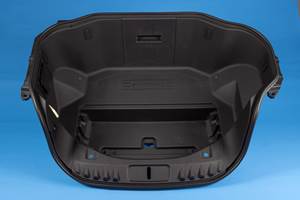Automotive Still Humming
Wood on Plastics
Year to date, the total number of motor vehicles assembled in the U.S. is up 5% over the same period in 2012.
The automotive market continues to be one of the bright spots in the lackluster U.S. economic recovery. We track and forecast both monthly motor-vehicle assemblies and light-vehicle sales. The trend in assemblies is more of an indicator of the health of domestic manufacturing in the auto sector, while the sales data is an indicator of American consumers’ appetite to spend money on new automobiles. These two series offer different perspectives on the market, and both of them have been in a strong upward trend.
Monthly motor-vehicle assemblies is a measurement of the motor vehicles that are physically assembled in the U.S. The trend in this data is important for suppliers of materials, parts, and equipment to the industry. For the year to date, the total number of motor vehicles assembled in the U.S. is up 5% over the same period in 2012.
We project this rate of growth to continue through the end of next year and into 2014. Following a jump of 19% in 2012, motor-vehicle assemblies will expand another 5% in both 2013 and 2014. This will result in a total of 11 million vehicles assembled this year and 11.5 million vehicles assembled next year.
Interestingly, the number of autos assembled so far this year is up 8.5%, while the number of light trucks (pickups, minivans, and SUVs) is up 4%. The light trucks category has been the stronger sector in the U.S. for the past 20 years or so, but we may be witnessing the beginnings of a shift in market demand—consumers may finally be considering fuel efficiency more seriously at the dealership. If this continues, smaller, lighter vehicles with a greater proportion of plastics content will take market share away from heavier vehicles in the coming years.
The other important data for this industry are the monthly figures on light-vehicle sales. This data measures market demand for both domestically produced vehicles and imports. For the year to date, total sales of light motor vehicles are up 8.5% compared with 2012. Growth was particularly robust in June and July.
While this level of growth will decelerate in the coming months, it is clear that households are finally starting to spend more freely. The labor market has improved steadily in recent months, and home prices and consumer confidence are also rising. This has resulted in both a rise in the demand to replace aging autos and, perhaps more importantly, an increased willingness by banks to lend money. The strong recovery in the residential construction sector will also generate demand for light vehicles as contractors start to purchase more pickups and SUVs.
Our latest forecast calls for light-vehicle sales of close to 15.5 million in 2013, followed by more than 16.5 million units in 2014. The next couple of years will likely see sales totals that are above the long-term, sustainable average for this market. This is because there is still a substantial amount of pent-up demand in the marketplace, as the average age of American cars is still quite high by historical standards.
WHAT THIS MEANS TO YOU
•Electric cars are a very small market segment at this point, but this segment is growing rapidly. In the coming years, demand will be less affected by market acceptance, and more by the pace of infrastructure development for recharging these vehicles.
•The natural-gas vehicle segment is also tiny, but expanding. There is still a question of market acceptance of these vehicles as well as a lack of adequate infrastructure to fuel them. This will change rapidly as the American industry and marketplace for natural gas develops.
•Plastic and composite parts will continue to replace metal parts in the never-ending quest to raise fuel efficiency.
Related Content
Automotive Awards Highlight Emerging Technologies
Annual SPE Automotive event gives nods to several ‘firsts’ as well as sustainability.
Read MoreAutomotive Awards Highlight ‘Firsts,’ Emerging Technologies
Annual SPE event recognizes sustainability as a major theme.
Read MoreQ&A: Bioproduction of PHA and the Future of Plastics
A conversation with Max Senechal and Leah Ford of CJ Biomaterials
Read MoreSkipping the Pellet for Efficient Recycling in Molded Engineering Plastics Applications
AGS Technology leverages deep experience in molding with recycled engineering materials for automotive and heavy equipment parts.
Read MoreRead Next
People 4.0 – How to Get Buy-In from Your Staff for Industry 4.0 Systems
Implementing a production monitoring system as the foundation of a ‘smart factory’ is about integrating people with new technology as much as it is about integrating machines and computers. Here are tips from a company that has gone through the process.
Read MoreMaking the Circular Economy a Reality
Driven by brand owner demands and new worldwide legislation, the entire supply chain is working toward the shift to circularity, with some evidence the circular economy has already begun.
Read MoreLead the Conversation, Change the Conversation
Coverage of single-use plastics can be both misleading and demoralizing. Here are 10 tips for changing the perception of the plastics industry at your company and in your community.
Read More








